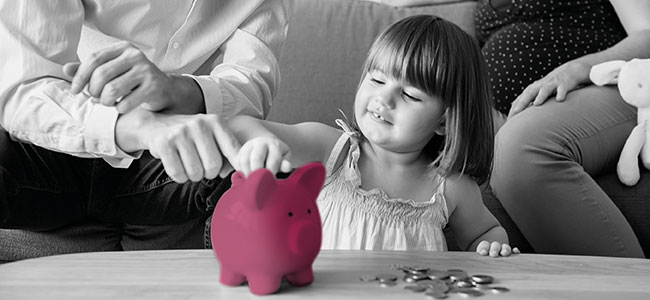Investing for the next generation

It’s natural to want to give younger members of your family a leg up financially. We all know how expensive life can be, especially at certain times – whether that’s studying or buying a house.
Parents and family often do what they can to help children, with many choosing to set aside money for their future during their childhood. If you’d like to give your children or grandchildren a better financial future, your financial adviser could be able to help you do so effectively, making good use of any tax benefits available to you.
When you’re deciding how to invest, it’s important to remember that tax rules can change and the impact of taxation depends on your circumstances and where you live. Please remember, the value of your investment can go down as well as up, so you might not get back the amount you put in.
Daunting challenges
As property prices have outpaced wage growth, buying a home has become more daunting for many. By one measure, houses are half as affordable as 20 years ago. In England, the median house price in 1997 was 3.6 times greater than median annual salaries. By 2022, it was around 8.3 times greater. The average price paid by first-time buyers in August 2024 was £310,000.
Before that, your children or grandchildren may have to face tuition fees if they choose to go to university – whereas around two decades earlier it was free to study.
According to Government statistics, students now graduate with average debts of roughly £43,000, so it’s easy to see how repayments could place a heavy burden for years, if not decades, after graduation.
Gifts for their future
If you’re looking to build a nest-egg for a child, to prepare them for the financial challenges of early adulthood, there are compelling reasons to take a long-term approach, and by long term we mean 10 years or more.
Investing early for a child’s future, with the capital locked away for as long as 18 years, gives your money longer to potentially grow until the money is needed. But the value of your investment can go down as well as up, so you might not get back the amount you put in.
Saving money in cash may seem like the safest option. After all, with cash there’s very little risk of losing money. £5,000 in the bank today means you’ll likely have £5,000 or more in five years’ time. But over time, rising prices and inflation can erode its value.
When investing for children, you might want to talk to your adviser about the tax-efficient benefits of Junior ISAs (Individual Savings Accounts). Junior ISAs offer similar tax advantages to ‘adult’ ISAs, but with a lock-in, making the child’s investment inaccessible until they turn 18. Like an ISA, Junior ISAs can invest in equities (shares in a company), bonds (a fixed-term loan usually issued by a company or government) and even multi-asset funds (diversified, ready-to-go investments), giving you flexibility over the future of your child’s long-term savings. But your adviser will be able to help you decide the most suitable option for your situation and plans.
When children come to access their investments, whether they are 20 or 30, all capital gains will be tax-free – allowing them to make the most of your gift to realise their ambitions. The information expressed in this article should not be taken as a recommendation, advice or forecast.
To find out if a Junior ISA might be a good option for you and your family, we recommend you speak to your financial adviser.


